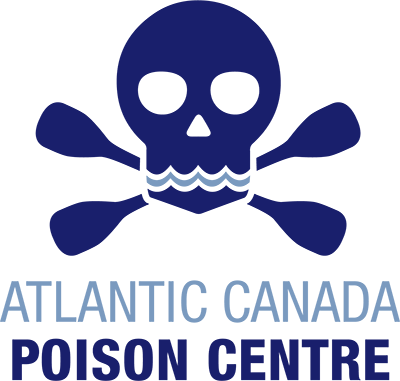
Atlantic Canada Poison Centre
Antidote Kit Manual
Deferoxamine
Desferrioxamine, Desferal, DFO
Indications
- Acute iron intoxication manifested by any or all of the following: Iron level greater than 90 umol/L, shock, acidosis, severe gastroenteritis, significant number of radioopaque pills on Xray.
Dosage
- Intravenous route is preferred in ALL cases. The IV dose can be administered intraosseous (IO) in emergency situations .
- IV: 15 mg/kg/hour (Not to exceed 6 g in 24 hours) as continuous infusion until lab values and clinical status are normalized and urine is normal colour.
*In some severe cases, higher infusion rates have been used. Consult the Atlantic Canada Poison Centre. - IM: 90 mg/kg/dose initially, then 45mg/kg every 4 to 12 hours until lab values and clinical status are normalized and urine is normal colour (maximum 1 g/dose and 6 g in 24 hours).
Administration
INFUSION
- For a final IV concentration of 4 mg/mL: Add 2 g (1 x 2 g vial or 4 x 500mg vials; 9.5 ml of 210 mg/ml solution [approximate values]) to 500 mL of sodium chloride 0.9% or dextrose 5% in water.
- Maximum rate of administration is 15 mg/kg/hour. (Note the possible adverse effects of rapid and prolonged administration mentioned in potential hazards of administration section).
Compatibility, Stability
- Compatible with sodium chloride 0.9%, dextrose 5% in water and lactated ringers.
- Stable for 24 hours at room temperature.
Potential Hazards of Administration
- Infusions greater than 24 hours may be associated with severe or fatal pulmonary toxicity.
- Headache, nausea, urticaria, arthralgia, myalgia, fever.
- Pain and induration at the site of injection.
- Reddish discolouration of the urine as chelated iron is being excreted.
- Allergic reactions (dermatological, anaphylaxis).
- Respiratory distress syndrome has been reported following IV administration of excessive doses. Treatment should be interrupted if signs of toxicity occur.
- Rapid IV injection (greater than 15 mg/kg/hour) has produced flushing, urticaria, hypotension and shock.
- Decreased serum glucose, sodium, calcium and increased blood coagulability.
- Infection with yersinia species or mucormycosis may be promoted by deferoxamine.
- Visual disturbances, hearing loss and audiometric abnormalities have been reported, especially if high doses used. Serial ophthalmological and audiological testing should be performed, if symptoms noted and then as necessary.
Miscellaneous
- Use with caution in patients with impaired renal function. Adequate urine output is required to excrete the deferoxamine-iron complex. If oliguria or anuria develop, dialysis may be required.
References…
Bailey, B., Blais, R., Gaudreault, P., Gosselin, S., & Laliberte, M. (2009). Antidotes en toxicologie d'urgence (3rd ed.). Quebec, Canada: Centre antipoison du Quebec.
Balmadrid, C., & Bono, M. (2009). Recognizing and managing iron toxicity. Emergency Medicine, (May), 36-41.
Goldfrank, L. R., Nelson, L. S., Lewin, N. A., Howland, M. A., Hoffman, R. S., (2015). Goldfrank's toxicologic emergencies(Tenth ed.). New York: McGraw Hill.
Micromedex, T. H. A. (2014). Micromedex health care systems. Retrieved from http://www.micromedexsolutions.com
Olson, K. R. (2007). Poisoning & drug overdose (Sixth ed.). New York: McGraw Hill.
Phelps SJ, C. C. (2013). Teddy bear, pediatric injectable drugs. Retrieved from http://www.pharmpress.com/product/MC_PED/pediatric-injectable-drugs
Shannon, M. W., Borron, S. W., & Burns, M. J. (2007). Haddad and Winchester's clinical management of poisoning and drug overdose (Fourth ed.). Philadelphia: Saunders Elsevier.
Trissel, Lawrence, A,. (2013). Handbook on injectable drugs (17th ed.). Bethesda, Maryland: American Society of Health-System Pharmacists


